COVER- The Fast and the furious: New gym says slashing your workout time can make you fitter

When Kwame Burroughs opened Quick Gym on Water Street in 2007, some people laughed at his claims of fitness in just four minutes a day using his specialized equipment, a machine called the ROM that combines elements of rowing and pedaling. After all, anyone with any sense knows that fitness claims that sound too good to be true probably are too good to be true– "Ab Energizer," anyone?
In early July– more than two years after opening with great enthusiasm– a deflated Burroughs packed up his ROM machines and closed up shop, a victim, he says, of tough economic times. But in a painfully ironic twist, less than a week before his closing, the New York Times published an online article suggesting that Burroughs was right all along: new research shows that very high intensity exercise performed for just a few minutes each week confers greater fitness benefit than moderate exercise performed for hours.
While the article came too late to bolster Burroughs' business, it might quiet the naysayers who doubted the concept. It could also provide a powerful boost for another new gym that opened in early July– the same week Burroughs closed– promising huge fitness results in a fraction of the time of a standard workout.
Fast, however, doesn't mean easy, and workouts that are short on time can be long on controversy.
Not just any workout
There are grunts and groans, punctuated by the occasional scream. There's the deep clatter of massive barbells falling to the ground as the Black Eyed Peas blast over the sound system. And above it all are the shouts of trainers, whipping their charges into a fitness frenzy.
"Come on! You can go faster! One more! Keep it going!"
Red-faced participants pant and yowl, some collapse mid-push-up then strain to complete just one more set. It sounds like military training– and there are definite similarities– but there are no uniformed drill sergeants here.
This is CrossFit, a training program that promises body transforming results in workouts as short as six minutes. Since it was founded in California a decade ago by a former gymnast named Greg Glassman, the CrossFit phenomenon has spread across the country building a cult-like devotion among followers, who post videos of themselves performing feats of strength and speed on various CrossFit blogs and YouTube.
There are currently approximately 1,000 affiliates worldwide, and Charlottesville's is among the most recent to open, tucked in a small warehouse space in the old National Linen building at the corner of Market Street and Carlton Avenue.
"We offer workouts, not waterfalls," laughs CrossFit Charlottesville founder Kyle Redinger, referring to the gym's spartan atmosphere as compared to the luxurious ambience at other fitness facilities such as ACAC.
Indeed, it's not hard to believe that no interior designer was consulted before the opening of this gym. Along one white wall of the narrow CrossFit space, a former loading dock, are metal bars for pull-ups and several sets of gymnastics rings hanging from the ceiling. There are barbell bars and massive plates in a front corner, wooden boxes, medicine balls, and kettle balls– weighted metal balls with a handle– in a back room . Several rowing machines stand on end near the rear of the main space. That's about it– and that's no accident.
CrossFit workouts are designed to follow "functional" movements, i.e. those you actually use during the day for tasks like picking up heavy boxes, reaching for something on a high shelf, or even sitting on the toilet. You don't use fancy machines during your regular life, so it follows– at least according to CrossFit theory– that you don't need fancy machines to get in shape. The other key elements of CrossFit: the exercises are constantly varied and performed at a high intensity. Make that very high.
Redinger, who co-founded boutique investment business DeParis Redinger but may be best known as the founder of Charlottesville social gossip site cvillain.com, started CrossFit with three partners after a friend introduced him to the workouts last summer.
"I couldn't believe how fast my strength and conditioning increased," says Redinger, 26, a self-described long time "gym rat," who now thinks back to his days on traditional cardio and weight equipment and wonders how he stood it. "I'd be so bored now!" he exclaims.
Boredom generally isn't a problem in CrossFit, which the New York Times dubbed "God's Workout" in a 2008 article that explored the culture behind it– and the zealotry that often accompanies it.
The program, for instance, has its own language, something that may have helped build its cultish following. CrossFit gyms are known as a "box." And each day, members of any given CrossFit affiliate follow the same WOD (workout of the day). Many of these routines have innocuous sounding female names– Cindy, Mary, Linda. These are not dainty ladies, however. In fact, they're malicious minxes set on causing searing pain.
The Cindy workout, for example, demands as many rounds as possible of five pull-ups, 10 push-ups, and 15 squats. Over and over again for 20 minutes, no stopping even when your muscles are screaming. Mary demands five handstand push-ups, 10 one-legged squats, and 15 pull-ups, repeated in rounds for 20 minutes.
Other WODs call for a certain number of exercises performed as fast as possible– "burpees" are a common one and involve rapidly going from a standing position to a push-up, then leaping up to finish with an overhead clap. Squats paired with 400-meter sprints leave quadriceps burning and shaking. The deadlift– in which an individual lifts a large weight from the ground to a standing position– also makes frequent appearances in various workouts.
If the workout "ladies" aren't very nice, neither are the CrossFit mascots– two clowns named Pukey and Uncle Rhabdo, the latter named for Rhabdomyolysis, a dangerous condition that can strike following extreme exercise in which ruptured muscle cells spill their contents into the blood stream, causing kidneys to shut down.
A Times article shares the story of Brian Anderson, a former Navy Seal who suffered the condition after his very first CrossFit workout. After six days in intensive care and months of recuperating, Anderson returned to CrossFit. "I see pushing my body to the point where the muscles destroy themselves as a huge benefit of CrossFit," he told the Times.
These tales of workout-induced near-death coupled with Glassman's unapologetic style–"If you find the notion of falling off the rings and breaking your neck so foreign to you, then we don't want you in our ranks," Glassman told the Times– have created an image of CrossFit that Redinger says he's trying hard to dispel.
"The macho, puking Navy Seal image scares people away," he admits, noting that at the Charlottesville affiliate, there's "a much more democratic view of people who want to get fit."
***
Indeed, on recent days there have been a variety of people– many of them women– giving CrossFit a try.
Twenty-four-year-old Jocelyn Scherr showed up for one of the free workouts CrossFit is offering on Wednesday afternoons and Saturday mornings, then joined with a friend.
"It didn't take a big chunk of my day," says Scherr, "and after doing it once, I could definitely feel it."
A runner who is hoping to complete a half-marathon this winter, Scherr also responded to Redinger's explanation that cross training can improve performance in specific sports in a way that traditional training simply can't, by strengthening all muscles, not just those used in that sport. Runners, for instance, won't build upper body strength logging miles on the road.
Redinger insists even those of moderate fitness level can do CrossFit– although he acknowledges the risk of injury from improperly performed exercises is real, hence the need for supervision by trainers.
"We make sure the workout's attainable," he says, noting that he and all his trainers are certified through CrossFit. "We obviously know that not everyone can do a 95-pound shoulder press or 225-pound deadlift." Anyone who joins CrossFit is put through three one-hour "foundations" classes, during which a trainer teaches proper form for exercises like the deadlift– a move that can be devastating to the lower back if performed improperly.
"Keep your chest up, maintain your lumbar curve!" Redinger instructs as this reporter, a 37-year-old mother of two who accepted Redinger's challenge to complete three-months of CrossFit, tries the move. Following the introductory classes, those just starting out on exercise are given "scaled" workouts until they build up the strength and endurance to complete the prescribed routine.
"Over time, you'll see improvement in that one workout. I guarantee, you'll do better on the second try," says Redinger. "That's the crazy awesome thing about it is it really works."
There's also the competitive nature of the endeavor: the workouts are generally completed in groups of five to eight with a trainer monitoring. Times are written on a white board, and Charlottesville members are encouraged to track their scores online at the gym's blog, Crossfitcharlottesville.com. But while it's competitive, it's not cutthroat. Topping the list of CrossFit rules written on a dry erase board near the entrance: "No Egos."
"We encourage athletes to be competitive," says Redinger, "and if they finish first, we'd prefer to see them cheering on their comrades instead of checking their scores."
There's one non-fitness-related hurdle a would-be CrossFitter must leap: the cost of membership, which– after an introductory special expires– will range from $80 per month for students or public service employees (police, fire, EMTs or military) to $600 for a six-month commitment paid in full. At $100 per month, that's $20 more per month than ACAC, already one of the priciest gyms in town.
And don't all gyms offer some form of cross training anyway?
At ACAC, for example, there are several sports conditioning classes each week– grueling one-hour affairs that have participants sprinting, doing push-ups, squats, jumping rope. That offering is in addition to yoga, pilates, swimming, cardio machines, weights, and countless other classes all included in the monthly membership fee.
"Boot camp style workouts are big right now" says ACAC vice president Amanda Harris, who says she's aware of new research supporting short, intense exercise sessions. "There are people that enjoy it and aren't getting hurt. Others," she says, "are going to find it's too hard if they're not fit enough to handle that kind of load. We're not going to force someone deconditioned to do the hardest workout we have."
Gold's Gym General Manager Daniel Harper says he, too, is familiar with CrossFit, but he believes the variety offered at his club trumps the simplicity of the CrossFit regime. In addition, he says, certified trainers help members design workouts that fit their lifestyles.
"We look at the whole big picture," Harper says. " Before we put a workout program together, we want to look at how active is your job, do you walk your dog? Then we design a workout around that." Recently, Harper says, Gold's trainers designed a workout routine for a local band that incorporated their need for camaraderie and variety. In addition to gym time, "we suggested playing flag football on the weekends," he says.
Redinger, however, points out that a CrossFit membership comes with something that would cost hundreds of dollars per month at either ACAC or Gold's: small group personal training, not just as a one-time sign-up benefit, but at every workout.
It's perhaps the perk that convinced Scherr her money would be well-spent at CrossFit.
"I don't think I would go that hard on my own," Scherr notes two weeks after signing up.
Not for everyone
There's little doubt, according to one local researcher, that if one follows CrossFit to the letter, significant results will follow.
"There is an emerging body of literature that indicates that high intensity exercise provides greater benefit than low intensity exercise," writes Arthur Weltman, director of UVA's exercise physiology program, in an email. He notes that research being conducted at UVA is giving similar results.
The research cited in the New York Times article was conducted at McMaster University in Ontario and involved two groups of healthy college students. One group rode a stationary bike for 90 to 120 minutes at a sustainable pace, three times a week. The other group rode the bike at the highest resistance they could stand for 20-30 seconds, followed by four minutes of rest. They repeated that cycle four to six times, three times a week.
Results of the research, also documented at the McMaster University website, showed that both groups equally improved their cardiovascular fitness and muscle strength even though one group had exercised a total of six minutes a week and the other group a total of six hours.
Extensive research conducted in both Norway and Japan offers similar conclusions. High-intensity interval training gives the best results. Known as Tabata intervals, named for the Japanese researcher who first studied them, they make frequent appearances in CrossFit WODs.
But Weltman points out that saving time might not provide enough impetus for some to trade their traditional moderate workouts for something like CrossFit.
"The exercise intensity used in these studies are supramaximal and very uncomfortable," Weltman notes.
Could the extreme discomfort of truly high intensity workouts– even though they're very brief– have contributed to Quick Gym's closure?
ROM lives on
For Kwame Burroughs, the decision to close Quick Gym wasn't because he lost faith in his ROM machine.
"I saw people who'd come in on a regular basis, work out four minutes and stay in shape," he says. "I think they were pretty darn pleased about that."
But tough economic times didn't translate to a solid membership base.
"I began to notice it last year," he says, "I had members who lost jobs, had to declare bankruptcy, people cutting back on discretionary spending."
Burroughs, charging about $60 a month, wasn't the only ROM act in town, as it turns out. Personal trainer Pat Foy, husband of WINA radio personality Jane Foy, opened up his own ROM workout facility, Fastway Fitness, in the Rio Hill Kroger six months after Burroughs opened his business. While memberships have slowed some, Foy says that demand remains, and he believes it will grow as more people accept that short bursts of high intensity exercise really do the trick.
"I'm 72, and I can do aything I want to do physically," says Foy, who before discovering the ROM, had been exercising six to eight hours a week and working as a personal trainer.
"I have a whole lot of members who are pleased with changes in their bodies, who are generally happier," says Foy, who recommends his clients do both upper and lower body routines– a total of eight minutes– three times a week. Thanks to his location, those clients can multi-task, picking up groceries in the same location as their workouts.
Even Foy admits those four to eight minutes aren't fun, something that's deterred some of those who've considered joining.
Getting new members is "always a struggle, particularly in these economic conditions," he says. "There are people who A), don't believe it, and B), find it too difficult."
Those aren't the only reasons the ROM isn't for everyone.
Physician Bill Fox joined Quick Gym when it opened on Water Street back in March 2007, curious, he said at the time, to see if he could maintain his fitness level using the ROM and save hours every week. He remained a member for several months, he now says, then returned to ACAC– but not because the ROM didn't work.
"I maintained my fitness level," he says, praising the machine, "but I missed the variety."
Variety, says Redinger, is perhaps the number one difference between CrossFit and the ROM. And it's not the only one.
The ROM is, by its nature, a solitary exercise. CrossFit, on the other hand, is an intense community in which you compete not only against yourself but against others. Annual CrossFit Games pit members from the various CrossFit gyms across the country against each other in events of strength, speed, and agility. Even regular workouts feel like team training rather than gym sessions. CrossFit members are welcome to drop in for workouts at any affliate across the country without being charged. And those who can't afford to pay the membership can perform the workouts at home and are still welcome to post their results on the message boards.
That sense of community, Redinger believes, sets CrossFit apart and will attract a certain type of individual to its ranks.
At a recent afternoon session at the CrossFit gym a group of athletes (a term used loosely here, since this reporter was a member) gather to warm up.
"I'm always nervous before a workout," admits CrossFit co-owner Francesco DeParis, as others in the group nod their heads in agreement. Butterflies prior to CrossFit workouts are common, like those felt by athletes prior to competition. Less than 15 minutes later, however, the butterflies are gone, and the grueling workout is complete. DeParis and the others are soaked in sweat, their muscles shaking. But all are smiling as they exchange high fives.
"That hurt!" says one with a laugh as she prepares to leave.
But not before promising to return the next day.
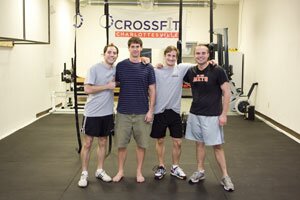
Are these the new faces of fitness? CrossFit Charlottesville owners Francesco DeParis, Chris Obenshain, Kyle Redinger, and Landon Perdue.
PHOTO BY WILL WALKER
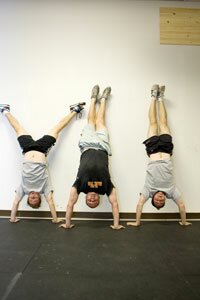
Could you do a handstand push-up?
PHOTO BY WILL WALKER

Exercising regularly is "as much mental as it is physical," says ACAC vice president Amanda Harris. "If you don't enjoy working out, it's not going to work for you."
PHOTO BY WILL WALKER
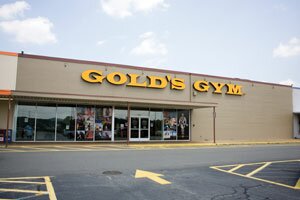
We can do crossfit style workouts combined with kickboing, combined with spinning," says Gold's General Manager Daniel Harper.
PHOTO BY WILL WALKER

Two and a half years after opening Quick Gym, Kwame Burroughs shut down his business– the same week research supporting his claims was published in the New York Times.
FILE PHOTO BY COURTENEY STUART
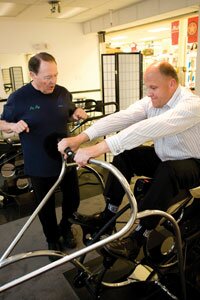
The ROM is still available in Charlottesville thanks to Pat Foy's Fastway Fitness in the Rio Hill Kroger. Here, Foy instructs Philip Jould on the machine's proper use.
FILE PHOTO BY COURTENEY STUART
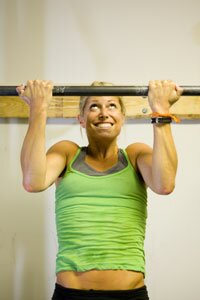
Ultrafit: Sarah Daley does pull-ups at CrossFit. That exercise and others can be modified for those unable complete them.
FILE PHOTO BY COURTENEY STUART
#
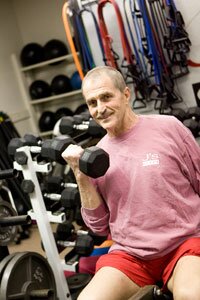
4 comments
So...I was intrigued by the bit on J's Gym, and went by there today (Monday), and...it's gone! Equipment gone, nobody answering the phone, website not functioning...
So...where'd he go?
J's Gym had a planned move and the new address is 243 Whitewood Rd. across from albemarle high school. Call 923.0497
My God, Sarah Daley! Are you single? Can you put her on the cover every week, please?
i went to nursery school with sarah.. now we both do crossfit.. pretty crazy